10 Smart Comedies From Wes Anderson’s World
Wes Anderson’s films are known for their distinct blend of quirky humor, visually striking aesthetics, and heartfelt storytelling. With a knack for creating eccentric characters and offbeat scenarios, his movies offer a perfect mix of wit and emotional depth. Whether through dry humor, clever dialogue, or whimsical settings, Anderson’s unique comedic style captures both the absurd and the meaningful. These films are a delightful journey into a world where humor and heart go hand in hand.
This post may contain affiliate links, which helps keep this content free. Please read our disclosure for more info.
The Royal Tenenbaums (2001)
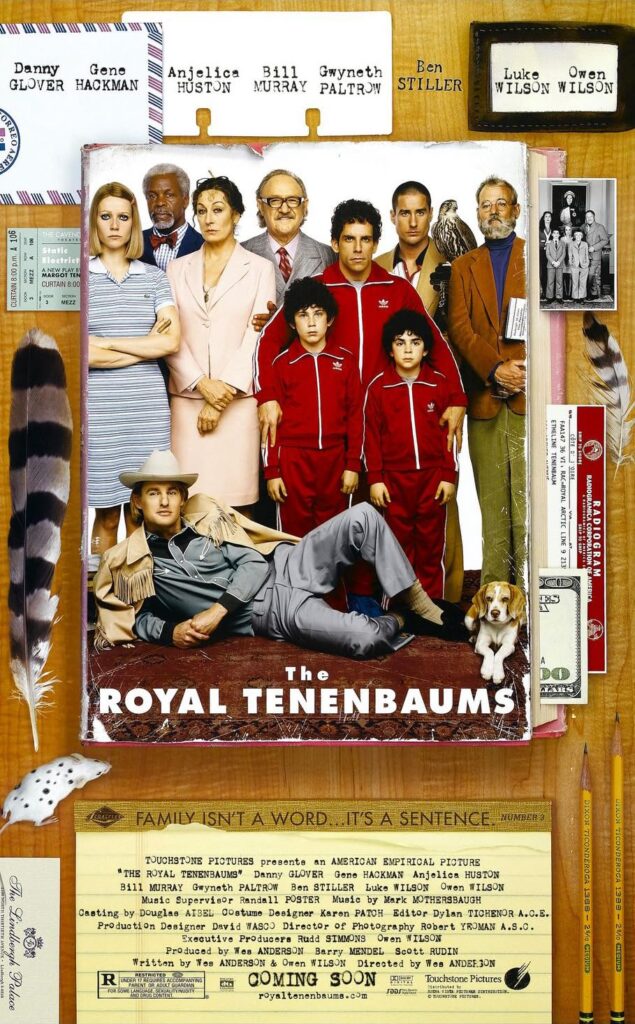
Wes Anderson’s The Royal Tenenbaums is a brilliant exploration of family dysfunction wrapped in dry humor and quirky dialogue. The film follows the lives of the Tenenbaum family, a group of eccentric individuals dealing with their pasts while navigating the complexities of family dynamics. Anderson masterfully blends deadpan comedy with heartfelt moments, giving the characters room to grow while keeping the tone whimsical. The film’s unique visual style, paired with a standout soundtrack, heightens the emotional depth, making it both funny and poignant.
What sets this film apart is the way it uses humor to address serious topics like grief, regret, and the search for identity. The character development is both subtle and profound, allowing Anderson to play with themes of acceptance, failure, and redemption in a way that is endearing yet sharp. The eccentricities of each character feel authentic, making them relatable despite their bizarre circumstances.
Fantastic Mr. Fox (2009)

In Fantastic Mr. Fox, Anderson brings Roald Dahl’s beloved children’s book to life through stop-motion animation. The film tells the story of a family of foxes who try to outwit three farmers to live a more fulfilling life. The humor in this film is razor-sharp, balancing the wit of Dahl’s original text with Anderson’s signature visual style. The use of color and detailed animation creates a magical world that complements the smart, layered comedy.
What makes this film special is its perfect mix of whimsy and adult humor. Anderson’s attention to detail in the design and his casting choices, including George Clooney as Mr. Fox, elevate the comedy. The film subtly touches on themes of family, ambition, and the clash between personal desires and responsibility, all while delivering laughs with every scene.
Moonrise Kingdom (2012)

Moonrise Kingdom is a sweet yet offbeat tale of young love set against a backdrop of quirky characters and beautifully crafted sets. The film follows two pre-teens, Sam and Suzy, who run away together, leading to a search party of concerned adults. Anderson’s signature visual style, coupled with a whimsical score by Alexandre Desplat, makes this a charming exploration of youthful rebellion and innocence.
What stands out in Moonrise Kingdom is its ability to find humor in the smallest details. Anderson uses the dry, understated dialogue and the absurdity of the adults’ reactions to the children’s actions to create both comedy and pathos. The film’s pacing allows for moments of reflection amidst the humor, making it an emotionally resonant piece that captures the magic of childhood while never losing its playful tone.
The Grand Budapest Hotel (2014)
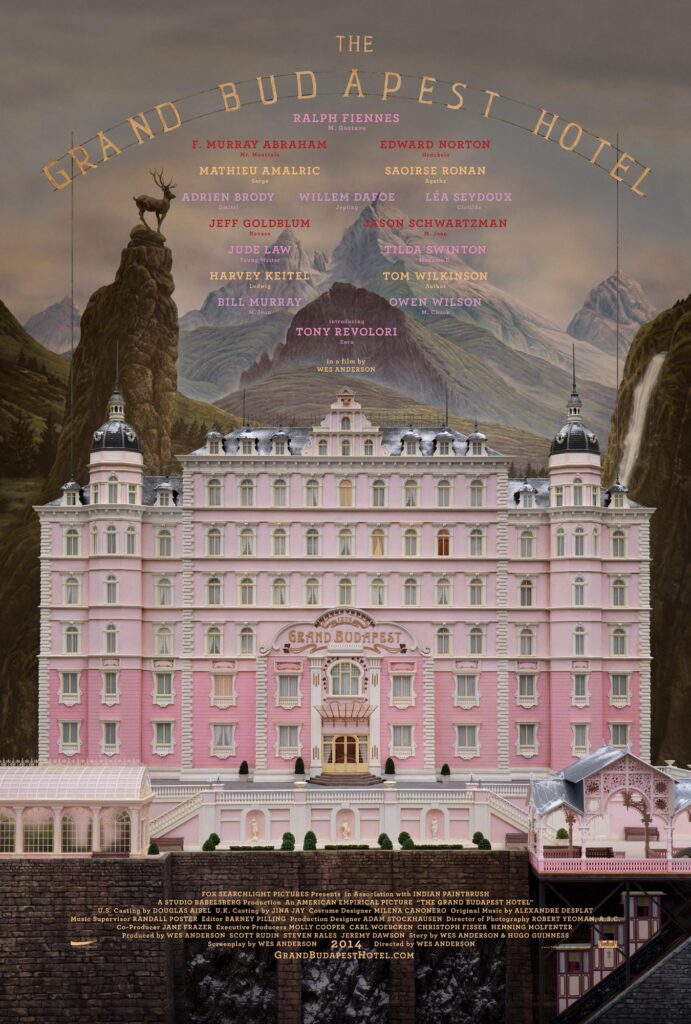
Set in a fictional European country, The Grand Budapest Hotel follows the escapades of Gustave H, a hotel concierge, and his protégé, Zero, through a comedic yet poignant adventure filled with intrigue and colorful characters. The film is a visual spectacle, from the symmetrical shots to the meticulous set design. Anderson uses the art of storytelling to weave a complex narrative full of dark humor, political commentary, and nostalgic beauty.
The wit in The Grand Budapest Hotel is sharp, with much of the comedy coming from the interactions between its quirky cast of characters. The dialogue is crisp and often absurd, yet it carries emotional weight. Themes of friendship, loyalty, and the passage of time are explored in a way that adds a bittersweet layer to the humor, making it one of Anderson’s most iconic films.
Rushmore (1998)
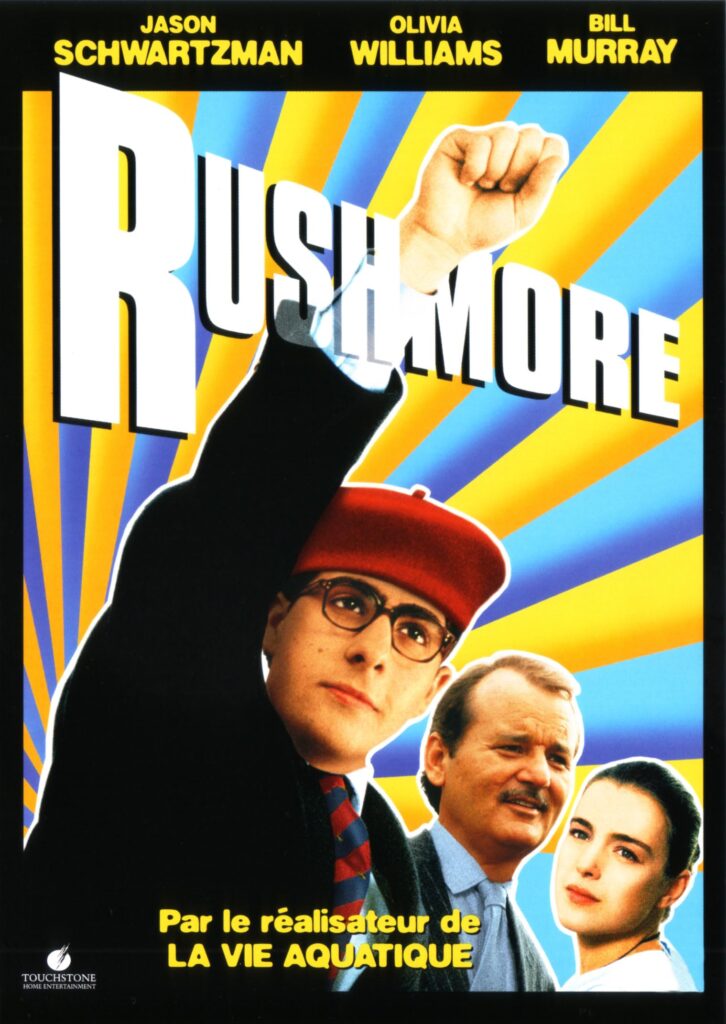
Rushmore was Wes Anderson’s second feature film, and it firmly established his distinct style of humor. The film centers on Max Fischer, a precocious teenager at an elite prep school, who becomes involved in various extracurricular activities and develops a rivalry with the school’s wealthy benefactor. The film is a clever satire of ambition, youth, and the desire for validation, with humor often emerging from the absurd lengths Max goes to for attention.
The comedy in Rushmore is incredibly smart, with Anderson’s meticulous writing paired with Bill Murray’s deadpan performance as a disillusioned businessman. The film’s charm lies in how it tackles themes of unrequited love, the complexities of adolescence, and the blurred lines between success and failure with a delicate touch, balancing humor with insight into human flaws.
Isle of Dogs (2018)
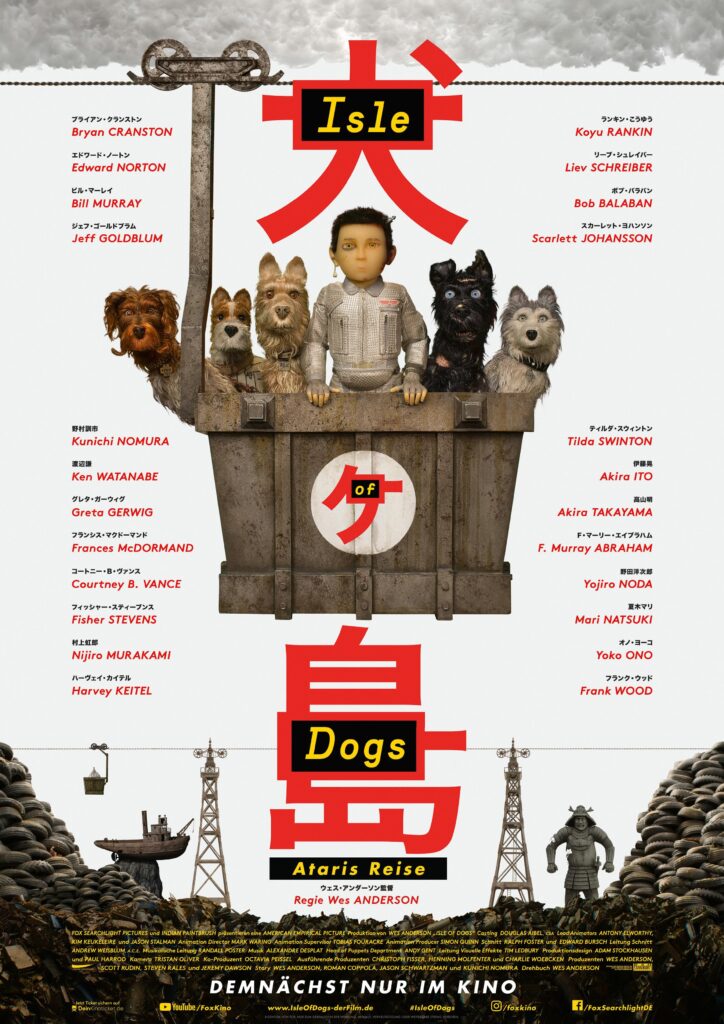
In Isle of Dogs, Anderson uses stop-motion animation to tell the story of a young boy’s quest to find his lost dog on a dystopian island where all dogs have been exiled. The film is packed with Anderson’s trademark wit, delivering a mix of visual gags, quirky characters, and unexpected humor. The humor is often dark, with political undertones exploring themes of loyalty, societal control, and compassion.
What makes Isle of Dogs a standout in Anderson’s filmography is its ability to blend humor with cultural commentary. The film’s visual design is striking, with its detailed landscapes and beautifully crafted puppets. While the humor is whimsical, it often carries a deeper meaning about the bonds between humans and animals, and the struggle for justice and freedom.
The Life Aquatic with Steve Zissou (2004)
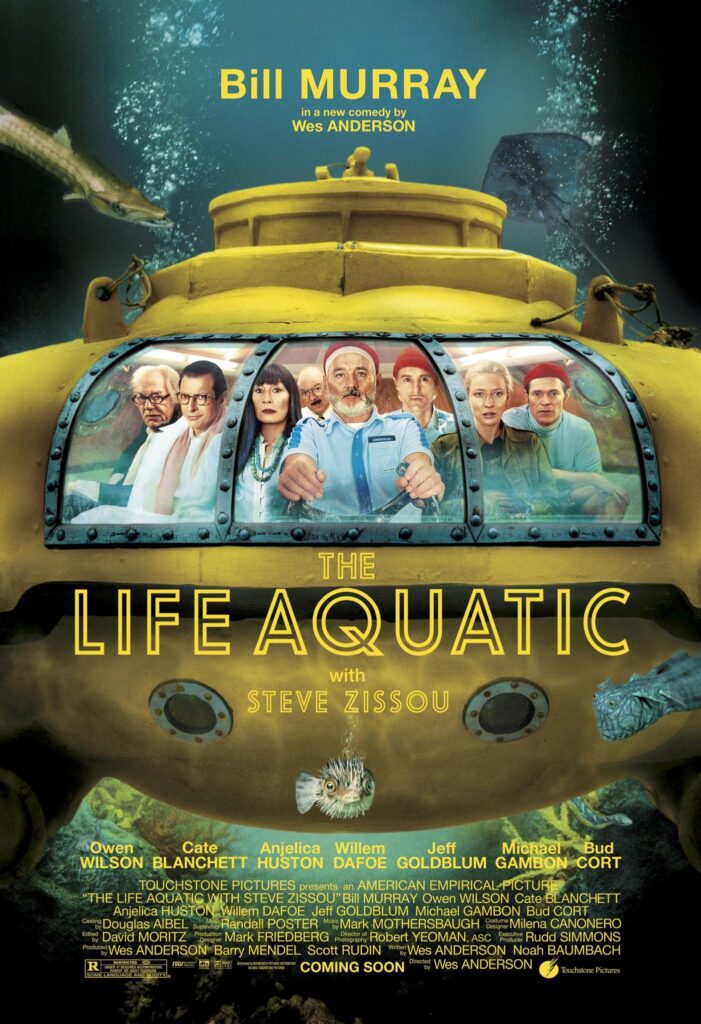
In The Life Aquatic with Steve Zissou, Anderson explores the absurdity of fame, personal failure, and the quest for meaning in life through the eccentric character of Steve Zissou, a washed-up oceanographer. The film is a blend of comedy and melancholy, where humor arises from the bizarre and outlandish situations Zissou and his crew find themselves in.
The charm of The Life Aquatic lies in its blend of quirky humor and melancholy. The film is peppered with clever dialogue, often delivered with deadpan seriousness. At its core, it’s about the flawed pursuit of glory and redemption, and the interactions between the offbeat characters that reveal moments of true human emotion amid the comedic absurdity.
Bottle Rocket (1996)
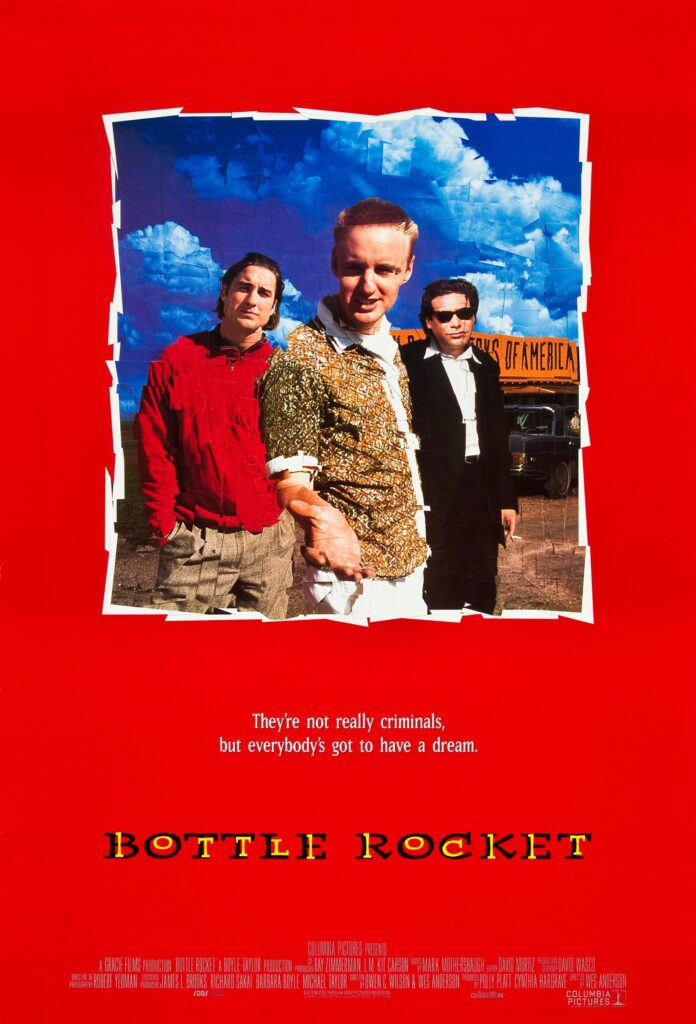
Wes Anderson’s debut film, Bottle Rocket, tells the story of three friends who attempt to execute a robbery, despite their lack of experience and competence. The film is a mix of dry humor, quirky characters, and the theme of personal aspirations gone awry. Despite its modest budget and indie roots, Anderson’s visual style is already apparent, and the comedic timing is sharp.
The humor in Bottle Rocket arises from the absurdity of the characters’ ambitions and their failure to meet their goals. The film is both a coming-of-age story and a parody of heist films, with moments of lighthearted comedy intertwined with reflections on friendship and the pursuit of something greater than themselves. Anderson’s direction allows for subtle yet effective storytelling, making it a perfect introduction to his unique comedic sensibility.
The Darjeeling Limited (2007)

The Darjeeling Limited follows three brothers who embark on a train journey across India to reconnect after the death of their father. The film is both a visual feast and a sharp comedy, filled with rich cultural references and witty dialogue. Anderson’s quirky style is on full display as he explores themes of family, loss, and the emotional distance between siblings.
What makes The Darjeeling Limited stand out is how it balances comedy with deeper emotional themes. While the film is filled with lighthearted moments and eccentric characters, it never loses sight of the struggles the characters face in finding reconciliation and understanding. The humor, like in many of Anderson’s films, comes from the characters’ oddities and the way they navigate through life’s challenges in their own peculiar way.
The French Dispatch (2021)

Set in a fictional French town, The French Dispatch presents the final issue of an American magazine, offering a series of eccentric and comical stories from its pages. Anderson’s penchant for wit is in full force as he brings the world of journalists, artists, and revolutionaries to life. The film’s humor arises from the absurdity of the characters’ situations and their responses to the often absurd world around them. The multiple storylines offer a playful yet poignant look at the world of print journalism, blending nostalgia with biting satire.
The comedy in The French Dispatch also benefits from its visual splendor. Each scene feels like a carefully designed tableau, with vivid colors and detailed backgrounds that reflect Anderson’s meticulous approach to storytelling. The film is as much a love letter to the art of filmmaking as it is to journalism, and the humor is woven into its layers, from the charmingly quirky dialogue to the visual gags that fill the screen. The smart comedy is paired with moments of emotional depth, providing a unique balance that resonates long after the credits roll.
This article originally appeared on Avocadu.
